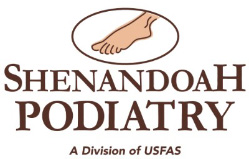
We're dedicated to providing the latest advancements in podiatric care. We remain committed to providing cutting-edge solutions for foot and ankle health. We're excited to introduce you to Clarix technology, a revolutionary advancement in podiatric care that can transform your experience as a patient.
What is Clarix Technology
Clarix technology is a state-of-the-art regenerative therapy designed to accelerate healing and enhance the recovery process for various foot and ankle conditions. It utilizes amniotic tissue grafts that contain a wealth of growth factors, cytokines, and extracellular matrix components to stimulate tissue repair and regeneration.
The Key Benefits of Clarix Technology
Faster Healing Time: Clarix technology has been shown to significantly reduce the recovery time for a wide range of podiatric conditions. Whether you're dealing with a chronic wound, a sports injury, or a surgical procedure, the use of Clarix technology can expedite your healing process.
Reduced Pain and Inflammation: Amniotic tissue grafts from Clarix technology have powerful anti-inflammatory properties, helping to minimize pain and discomfort associated with many foot and ankle issues.
Minimally Invasive: Clarix technology often requires only a simple injection or application of the graft, which means less pain and a quicker recovery compared to traditional surgical procedures.
Lower Risk of Complications: Traditional surgeries can come with various risks and complications. Clarix technology provides a safer alternative for patients seeking regenerative treatments.
Improved Quality of Life: By promoting efficient tissue repair, Clarix technology can help you get back on your feet faster and resume your normal daily activities, ultimately improving your quality of life.
Common Conditions Treated with Clarix Technology
- Chronic Wounds
- Plantar Fasciitis
- Achilles Tendinopathy
- Ligament and Tendon Injuries
- Osteoarthritis
- Neuropathic Ulcer
Is Clarix Technology Right for You?
Our experienced podiatrists at Shenandoah Podiatry will assess your condition and recommend the most suitable treatment options, which may include Clarix technology. We believe in delivering personalized care that addresses your unique needs.
Challenges of Foot & Ankle Surgery
Surgical Site Infection (SSI): This is an infection that occurs after surgery. SSIs can typically be superficial, involving the skin only, while at times leading to more serious complications such as osteomyelitis. SSIs occur in approximately only 2%-4% of all patients.
Patient risk factors for SSI include:
- Age
- Tobacco Usage
- Diabetes and Malnutrition
- Procedure-Specific Risk Factors
The unique anatomy of the foot and ankle leads to a higher propensity of wound healing complications compared to other orthopedic surgeries due to:
- Thin layer of soft tissue protection of underlying anatomy
- Deficient extremity blood flow around the ankle, especially in patients with comorbidities
Foot Fracture - Calcaneal Fractures
Calcaneal fracture repair is a procedure with a higher probability of complications. The complication rate after open reduction and internal fixation of calcaneal fractures operated on by a lateral extensile approach ranges from 10% to 20%. One of the worst perioperative complications associated with calcaneal fractures can be tissue or bone infection and/or wound complications. In a retrospective case review of 176 calcaneal fractures, a 4% wound infection rate and 27% overall complication rate were noted. Calcaneal fractures have a wound infection rate of approximately 4%.
Soft Tissue Tendon Repair
Common complications after tendon repair include delayed wound healing, soft tissue adhesions, tendon rupturing, and infections. Achilles tendon repair is known to have a higher risk potential for complications such as delayed healing, dehiscence, scarring, and infection.
Bone/Joint Total Ankle Arthroplasty (TAA)
Anterior approach TAA procedures have high wound healing complications of up to 34% due to the delicate skin around the ankle.11 Patients with diabetes, tobacco use, and obesity can exacerbate postoperative wound complications. A recent study showed that patients who received cryopreserved umbilical cord application as an adjunct at the time of surgery experienced an average of 11.day reduction in overall time to skin healing (28.5 days vs. 40 days) after TAA.
Contact Us Today to Schedule Your Consultation
Are you ready to experience the benefits of Clarix technology for your foot and ankle concerns? Reach out to us to schedule an appointment today by calling 540-904-1458 or filling out our online contact form and start your journey towards faster healing and better podiatric health.
Together we are on a journey to solve unmet patient needs by improving healing and reducing patient suffering. Don't let foot and ankle problems hold you back. Discover the power of Clarix technology today!

